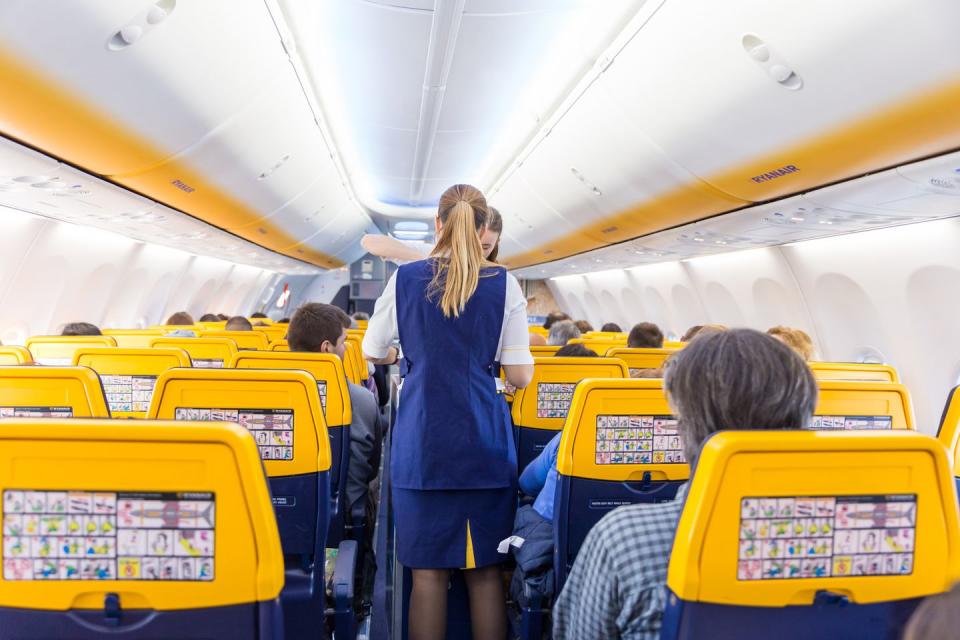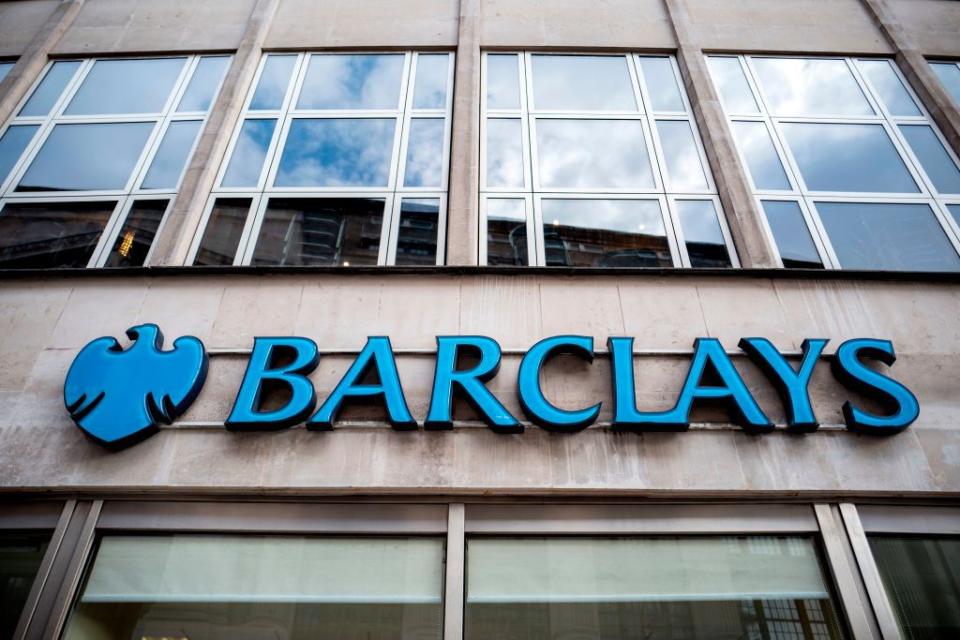The companies with the biggest gender pay gap

The deadline for UK companies to reveal how much they pay their female employees compared to men has officially been and gone.
Last year, the government ordered all UK companies with more than 250 employees to publish their gender pay gap report by midnight on April 4.
On the final day the results came in, the findings indicated that 78% companies showed a pay gap in favour of men, 14% had a gap favouring women and just 8% of companies had absolutely no gender pay gap. The government said that the UK's overall pay gap is 18.1%.
Under the law, companies must have calculated and published both the mean and median gender pay gaps, the mean and median bonus gender pay gaps, both the amount of men and women receiving a bonus and the amount of men and women in each pay bracket.
The median gender pay gap is essentially all the male employees arranged in order of lowest to highest hourly pay and the same done for the women. The hourly pay rate directly in the middle for both men and women is then compared. The mean gender pay gap means adding together all the hourly pay rates of men, then women, then dividing it by the amount of male employees and then female.
Now the deadline has passed, here's where the pay gap is the widest (and what the companies plan to do about it):
Airlines
Ryanair has the biggest gender pay gap of any airline at 71.8% when it comes to hourly pay. As the company is registered in Ireland, most of Ryanair's management and senior board, including its chief executive, is excluded from the figures, reports The Guardian. In the company, women make up 57% of the lowest paid jobs and just 3% of the highest.

In response to the report, the company essentially said the figures were due to the fact more pilots are men: "Like all airlines, our gender pay gap in the UK is materially affected by the relatively low numbers of female pilots in the aviation industry," a spokesperson said. "In recent years. the number of female pilots applying to Ryanair has increased and we are committed to developing this welcome trend. It is a feature of the aviation industry that more males than females choose to enter the pilot profession."
Other airlines including TUI and Easyjet reported similar findings. Women's median hourly rate is 45.5% lower than men's at Easyjet, the airline said their pay gap is "strongly influenced by the salaries and gender make-up of its pilot community" and that they have a target to have 20% of new entrant pilots to be female by 2020. TUI's median hourly rate was 47.3% and their mean 56.9%.
Retail
The women's fashion brand Coast has a median gender pay gap of 40.26% and 71.05% when it comes to mean. The company employs only 12 men while the remaining 867 employees are women. They said that given that they have two out of three male core executives "the results are heavily skewed by our executive team" as they are a "relatively small brand". When considering bonuses, 83% men receive a bonus while just a quarter of female employees do. Again, the company said the disparity "further highlights how the majority of our male population work within Head Office roles where the standard pay rates and opportunity to earn bonus is significantly higher than in retail roles".
In their report, the company said they were "satisfied" there is an explanation for the gender pay gap but are committed to ensuring the same opportunities are offered to men and women in the company.

Karen Millen revealed its (median) hourly pay gap rate to be 49%, meaning women earn 51p for every £1 earned by a man. However, 8% of both women and men receive bonus pay. The company said the report "paints a misleading picture about our commitment to gender diversity and equality". Female employees make up 94% of the workforce and Karen Millen said it was the overwhelming employment of women in stores compared to the "small percentage of male employees working mostly in head office" which makes the figure much larger. They said that when head office roles were excluded, the gender pay gap drops to 6%.
High street store Phase Eight's gender pay gap was also over 50%, with a median rate of 54.5% meaning women earn 46p for every £1 men do. The company also said their results were "misleading" and said it was a result of "the staff in our stores [being] overwhelmingly female, whilst our corporate head office staff (whose pay rates are typically higher) are more evenly split between men and women".
Banking
Barclays' report showed that women's hourly rate is 43.5% lower than mens, meaning men earn almost double what women do, with female employees earning 56p for ever £1 earned by a male employee. When calculating bonus pay, the report also found women's bonuses were 73.3% lower than men's.
The company said the gender pay gaps are driven by two main factors: The higher proportion of men in more senior roles and the higher proportion of women in more junior roles. They added they are confident that men are women are paid equally for doing the same job within Barclays and said they are focusing on initiatives to improve gender diversity.

The median gender pay gap for HSBC was 29% but the mean average for hourly pay was 59% between men and women, meaning that when comparing mean hourly rates for every 41p earned by a woman, men earn £1. When it came to bonuses, women's mean bonus pay was 86% lower than men's. The pay gap is driven by fewer women in senior leadership positions (just 23% are women), the fact that two-thirds of junior roles are women and the higher proportion of women on part-time hours, the company said.
Similarly, Goldman Sachs reported a median pay gap of 36.4% and a mean of 55.5%. The American banking giant said the gap "reflects our current reality that there are more men than women in senior positions in our organisation" and said they will focus on increasing the amount of women at a senior level as "this is where the real imbalance lies".
Football clubs

Perhaps unsurprisingly, given premier league footballer's frequently eye-watering salaries, and the fact they're, you know, all men, the gender pay gap at many of the UK's best clubs is pretty big. Stoke City's mean hourly rate pay gap was 92.5%, Manchester City's 87.7% and Arsenal's was 79.6%. However, the median pay rate was significantly lower, for example in Newcastle United's case women earned 83.3% less than men in terms of mean hourly rate but 0% - meaning there was no gender pay gap - when median was calculated. This is because the huge salaries that footballers and management staff get were at the top end of the scale, not directly in the middle. Also, when the club took out players and managers and calculated the mean gender pay gap again it was 16%, they said.
Property
Land Securities buys, sells and manages commercial property in the UK and is one of the biggest businesses in that industry. Their gender pay gap for hourly wage was 36.3% meaning women earn 64p for every £1 men earn. The company released their report in November and said that "at first glance, the figures would suggest a significant pay gap between males and females... however, we are satisfied that the issue is one of female representation in higher-paying roles, rather than of equal pay for equivalent roles". The brand said that encouraging more females into senior roles is a priority going forward.
Healthcare

The biggest gap in the NHS falls at the feet of the Queen Victoria Hospital NHS Foundation Trust in East Grinstead, Sussex where female staff are typically paid 40.6% less than men. Per the BBC, the trust said there were more men employed in higher-paid clinicians roles and said "this will change as we appoint more female consultants and as our current female doctors progress to more senior roles."
Police
The Derbyshire police force has the largest gender pay gap of any force in the UK. The median difference between salaries of male and female staff is 28.8%, meaning when comparing hourly rates women earn 71p for every £1 men earn, reports the Derby Telegraph.
A spokesman for the force said that the mean averages are lower and that the statistics are "broadly similar to the national picture in policing, which tells a story of lots of progress made, but lots of work still to do".
"We believe our median figure is heavily skewed because we employ so many of our police staff directly as opposed to through external agencies," he said. "Which are not included in the figures recently released by forces across the country."
The force said they are determined to close the gender pay gap.
Additional reporting by Associated Press.
You Might Also Like


